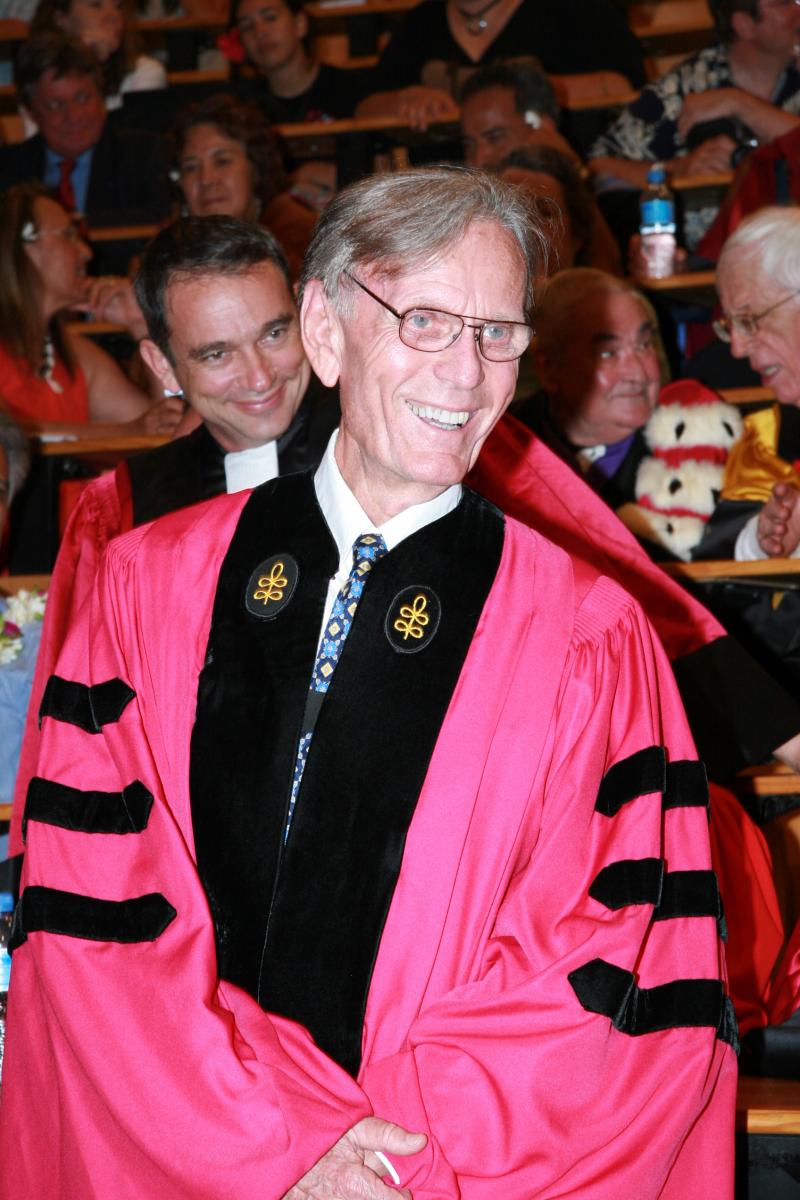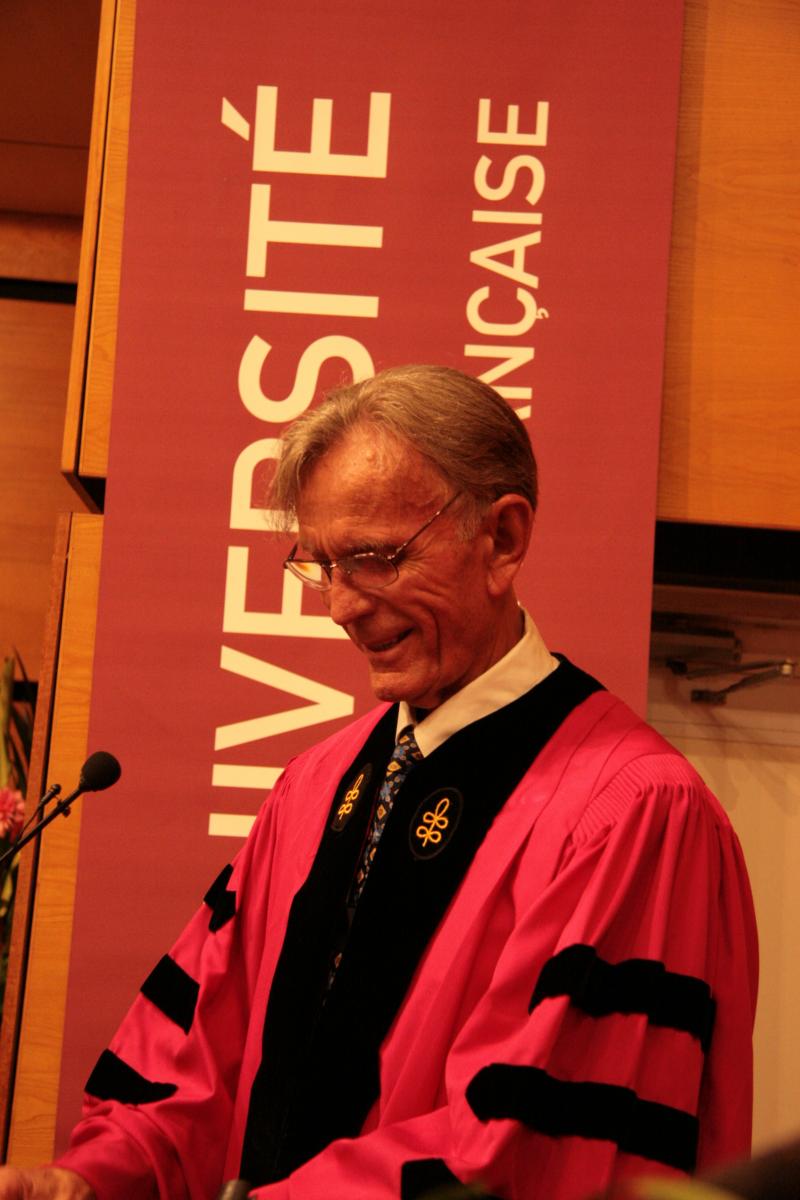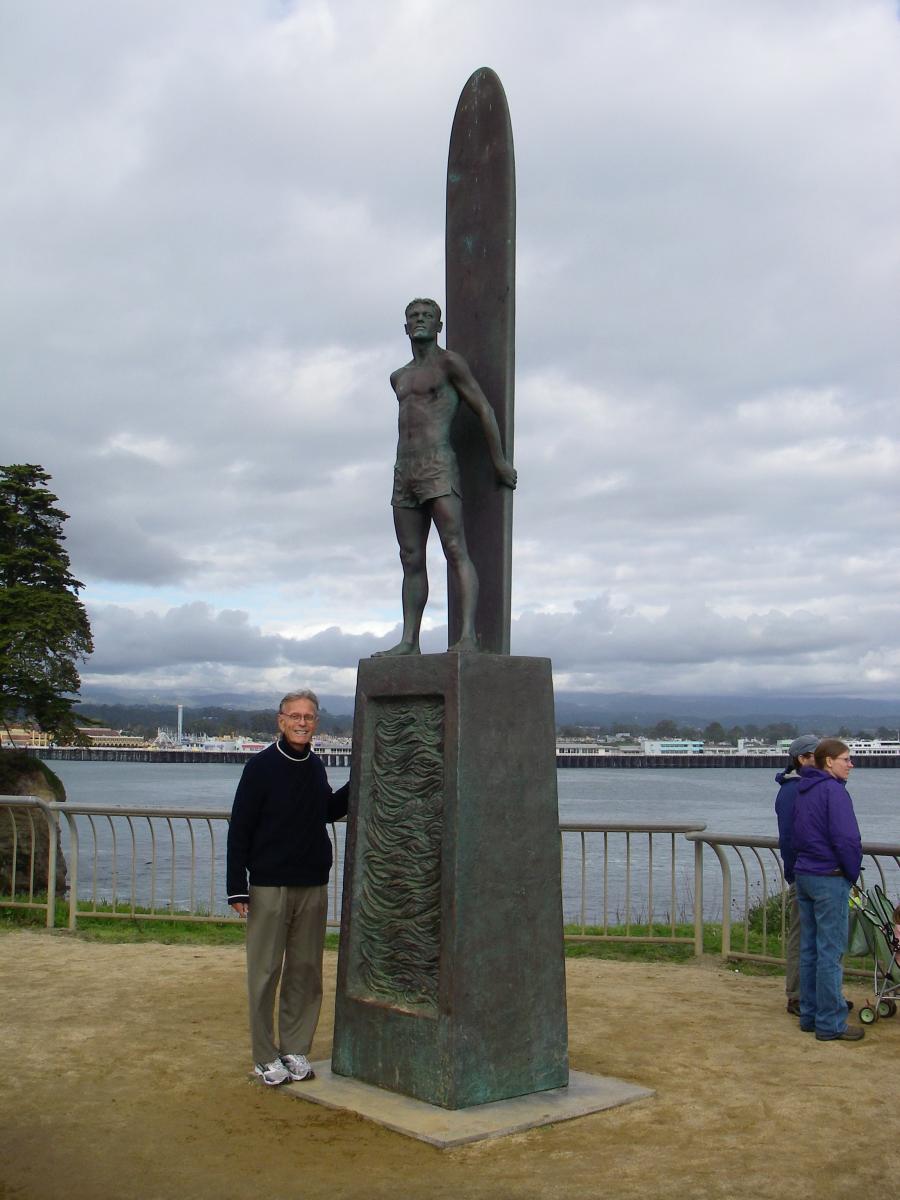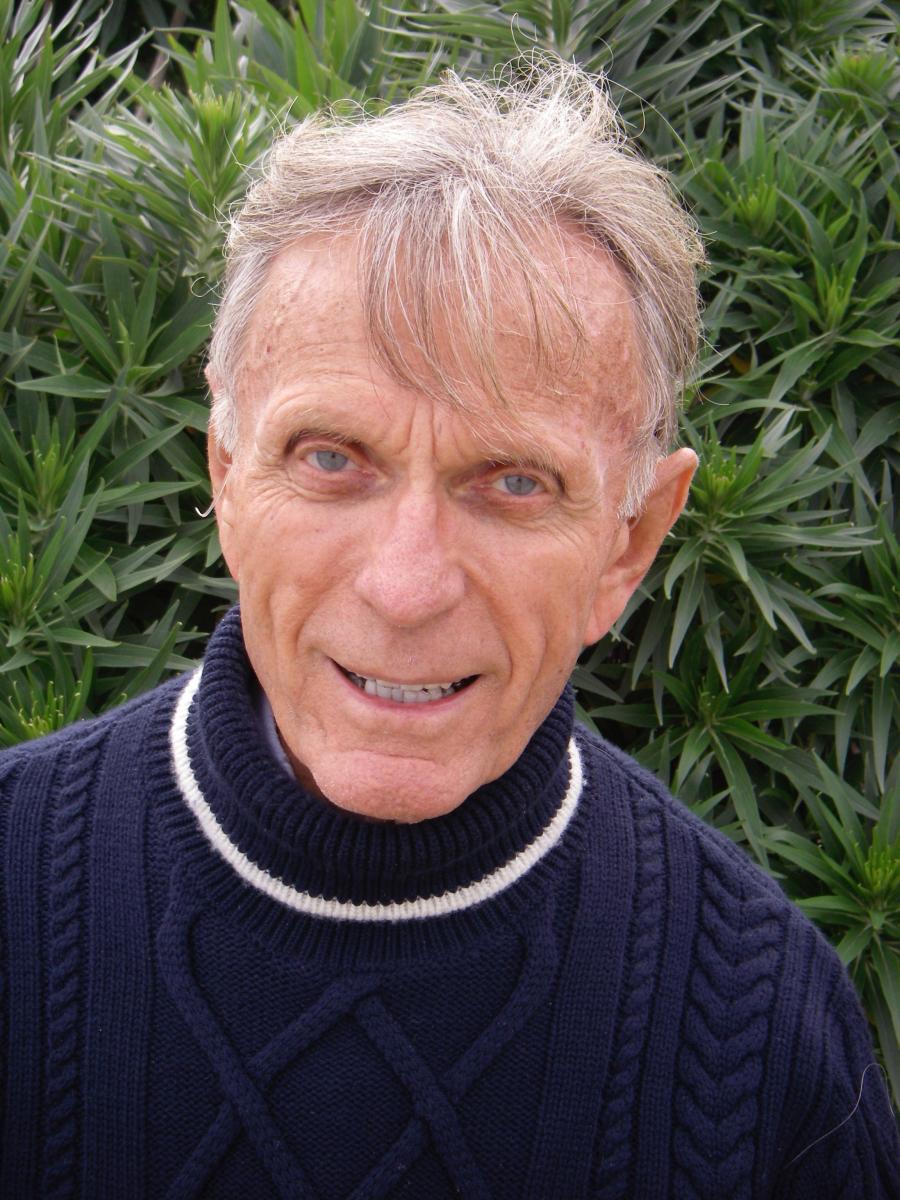L’université de la Polynésie française rend hommage au célèbre anthropologue du Pacifique Ben Finney, auquel l’établissement avait décerné en 2007 le titre de Docteur Honoris Causa.
BEN FINNEY 1933-2017
Ben Finney vient de mourir. Ben Finney est mort mardi 23 mai 2017. Tu Moana vogue vers Hawaiki.
Ben naît à San Diego le 1er octobre 1933. Il décroche sa licence d’histoire, économie et anthropologie à Berkeley en 1955. Venu au Pacifique par le surf, il part s’installer à Hawai’i où, en 1959, il obtient sa maîtrise à l’Université. Ben découvre Andrew Sharp par l’intermédiaire de sa directrice d’études, Katherine Luomala. Sa voie est tracée. Il contrera celui qui réfute l’idée que les Polynésiens aient été capables d’explorer et de peupler intentionnellement le Pacifique, de maintenir des liaisons aller-retour entre leurs archipels. Comment naviguer au-delà de 500 km sans instruments ? Sharp soutenait que les lointaines colonies avaient été touchées accidentellement puis vouées à l’isolement.
Enseigne de vaisseau de 1ère classe (lieutenant de l’US Navy), l'universitaire au pied marin met le cap sur la Nouvelle-Angleterre, Harvard, où il devient docteur en anthropologie en 1964. Il est en poste à l’antenne de l’Université de Californie à Santa Barbara en 1965 et se lance dans la construction d’une pirogue hauturière de 13 mètres. Ben s’inspire du plan de la pirogue du monarque hawaiien Kamehameha III établi par un officier de la marine française. La wa’a lua assurait le cabotage et les liaisons inter-îles. Mary Kawena Pukui, alors doyenne des études hawaiiennes, baptise la nouvelle pirogue Nalehia, ‘les expertes’, en hommage à ses coques gémellaires. S’appuyant sur les performances de Nalehia et les travaux de David Lewis, expert en reconstitution des techniques pré-européennes de navigation, auteur de We the Navigators, Ben se prend à rêver d’un voyage aller-retour Hawai’i-Tahiti en pirogue hauturière.
Il obtient un poste à l’Université hawaiienne en 1970, s’associe à l’artiste Herb Kane, célèbre pour ses magnifiques tableaux anthropologiques, et à l’Haole (Européen d’Hawai’i) Tommy Holmes pour fonder la Société Polynésienne des Voyages en 1973. Ne faut-il pas collecter les fonds nécessaires à la construction de la future pirogue et à la traversée ? Car l'ambitieux projet va bien au-delà du désir de vider la querelle scientifique entre voyage fortuit et voyage intentionnel. Ben Finney se veut l'artisan d'une authentique renaissance culturelle. Son premier travail de terrain, à Tahiti, pour l'obtention du doctorat, couplé à son vécu quotidien d’Hawai’i, en font l'ardent défenseur de la civilisation polynésienne. Il tient à œuvrer pour que les îliens du Pacifique recouvrent la fierté perdue dans le choc de cultures avec l’Occident.
Plongé dans les quatre imposants volumes du journal du capitaine Cook, Ben est fasciné par le perpétuel étonnement du plus grand de tous les explorateurs. De 1769 à 1779, Cook découvre des navigateurs autochtones de la même trempe que lui. Plus qu’un interprète en Nouvelle-Zélande, le Tahitien Tupaia, que Banks embarque sur l’Endeavour, est une mine d’informations. Imaginons Cook au cours des six mois passés à reconnaître la Nouvelle-Zélande : point de mythique continent austral mais deux grandes îles reflétant l'Italie aux antipodes !
Hokule’a, est le nom hawaiien de l’étoile Arcturus qui passe au zénith de la Grande Île d’Hawai’i. Il sera aussi celui de la pirogue hauturière de 19 m. Herb Kane en fait une impressionnante peinture dont posters et dépliants récoltent l’argent nécessaire au lancement du chantier. Hokule’a est mise à l’eau en 1975 et après nombre d’essais, d’entraînements et de modifications, réalise l’aller-retour promis Hawai’i-Tahiti-Hawai’i en 1976. David Lewis fait partie de l’équipage, ainsi que Rodo, navigateur des Tuamotu, et Pius Piailung, dit Mau, âme de l’expédition, maître d’astres et de navigation micronésien recruté à Satawal, Yap. Cet exploit scelle la Renaissance polynésienne. Il rétablit l'harmonie motrice avec les étoiles, les houles, les oiseaux, les nuages.
Ben est le mieux armé d'entre nous pour le dernier voyage...
Serge DUNIS,
Professeur des Universités à l’UPF de 1991 à 2015


Ben Finney, le 25 octobre 2007 à l'université de la Polynésie française,
lors de la cérémonie de remise du titre et des insignes de Docteur Honoris Causa
BEN FINNEY 1933-2017
Ben Finney is no more. Ben Finney died on Tuesday 23 May 2017. 'Tu Moana' sets sail for Hawaiki.
Ben was born in San Diego on 1st October 1933. He graduated in History, Economics and Anthropology at Berkeley in 1955. His love of surfing first lured him into the Pacific, and he settled in Hawai'i where in 1959, he secured his M.A. Katherine Luomala, his research supervisor at the University, introduced him to the works of Andrew Sharp. He had found his way. His self-set mission became to refute Sharp's notion that the Polynesians had been unable to conquer and settle the Pacific intentionally, unable to maintain contact between their distant archipelagoes through return voyages. Wasn't sailing beyond 500 km without any instrument simply unthinkable? Cut off from one another, these distant human colonies were bound to have been founded at random.
Former lieutenant in the US Navy, the young academic 'salt' then heads for New England where he becomes Doctor in Anthropology at Harvard in 1964. He lands a teaching post at the University of California at Santa Barbara in 1965 and launches into the construction of a 13 m sailing canoe. Ben draws his inspiration from the historic plans a French Navy officer once made of Hawaiian King Kamehameha III's canoe, a wa’a lua which used to ply between the islands. Mary Kawena Pukui, senior member in the Department of Hawaiian Studies, names Ben's new craft Nalehia, "the experts", to honor her twin hulls. Building on his canoe's performance and David Lewis's achievement in salvaging pre-European Pacific sailing techniques as documented in We the Navigators, Ben embarks on his dream of a return voyage between Hawai'i and Tahiti...
Appointed at the University of Hawai'i in 1970, Ben teams with Herb Kane, the famous painter of minutely reconstructed native scenes, and Haole Tommy Holmes. They establish The Polynesian Voyaging Society in 1973. But funds are needed to build the canoe and sail it to Tahiti. Besides, the challenge goes well beyond settling the scientific debate with Sharp: intentional or unintentional sailing? Ben Finney is on a mission. He wants to reawaken Polynesians, spark their cultural Renaissance. His very first fieldwork among Tahitian peasants for his PhD research and his daily experience of O'ahu have turned him into a dedicated advocate of Polynesian civilization. Pacific Islanders must survive the culture clash with the West by first recuperating lost pride in their elect domain: the mastery of the seas.
Immersed in the four thick volumes of Cook's Journals, Ben is intrigued by the sustained permanent wonder the greatest of all explorers expresses: from 1769 to 1779, Cook discovers that the Pacific sea masters match his own skills. More than a mere interpreter, Banks's guest on board, the Tahitian Tupaia, demonstrates he can decipher nature's signs and sail safely from one island to another. How easy, then, to imagine Captain Cook in such company devoting six months to reconnoitre and map New Zealand... Not a continent 'Down Under' but two islands the size and shape of an inverted Italy - compliment of the Antipodes!
Hokule’a (Arcturus) is the name of the navigational star which reaches its zenith right above the Big Island. How appropriate to name the 19 m sailing canoe after it. Herb Kane then paints a most dramatic picture of the eponymous vessel, a canvas masterpiece which, duly duplicated in flyers and posters, raises enough money to begin shipbuilding. Hokule’a is launched in 1975 and, following numerous trials, training and fine-tuning, triumphantly makes it to Tahiti and back in 1976! David Lewis is on board, along with Rodo, a Tuamotuan navigator, and Pius Piailung, 'Mau', a Micronesian sea master of stars and seas hailing from Satawal, Yap - the last survivor in the Pacific of the traditional navigators, and with commanding mana. Their voyage crowns the Polynesian Renaissance. Even more: it reconfirms the power of the long-neglected navigational science uniting stars, swells, birds and clouds.
No-one more than Ben is better fitted to navigate this - his ultimate canoe voyage. Farewell, beloved Master.
Serge DUNIS


Ben Finney en février 2006 à Santa Cruz, Californie.
Photos Serge Dunis
`




